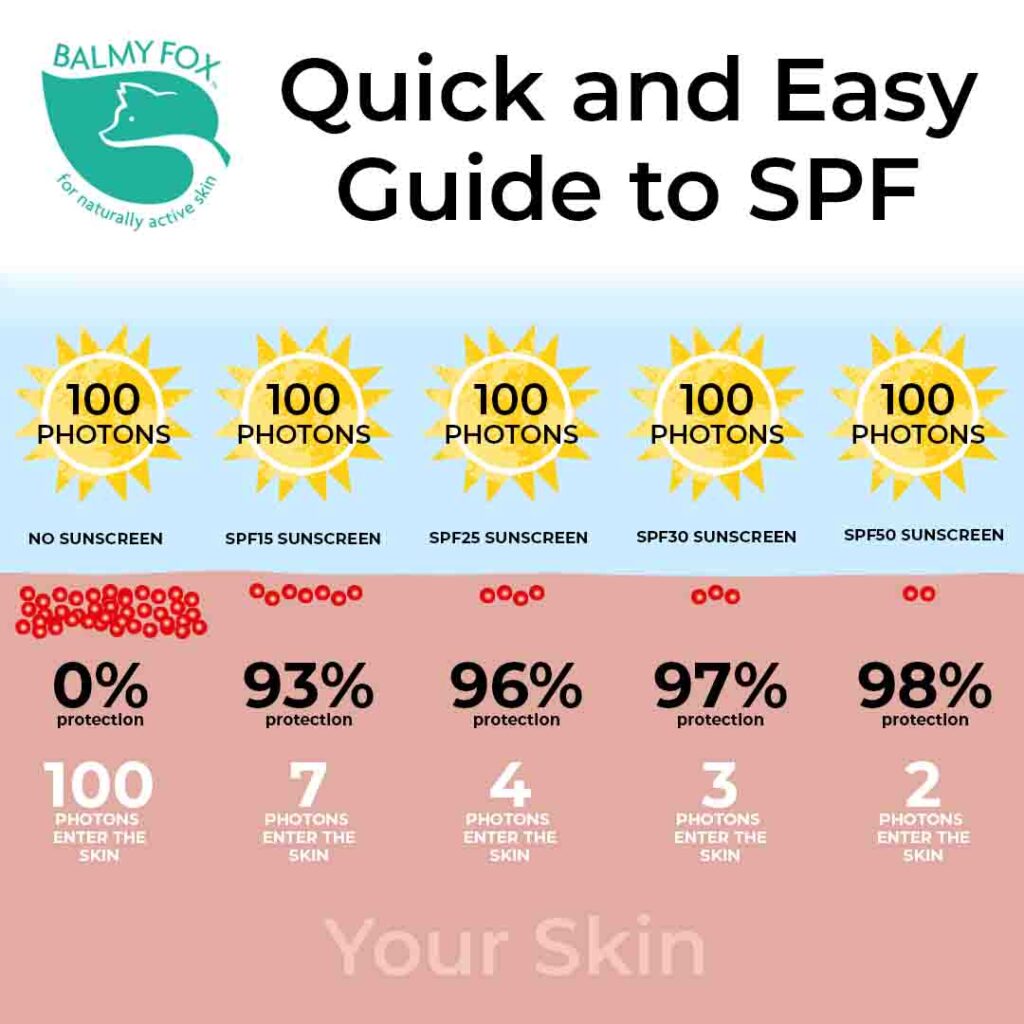
Hey you, it’s time for some real talk about sunscreen. You’ve probably heard some sketchy things about the stuff, and we’re here to set the record straight. The sunscreen industry wants you to believe some wild myths so you keep buying their products. But we care more about the truth and your health. So let’s bust five of the biggest sunscreen myths out there and give you the facts you need to stay sun safe this summer without getting burned – figuratively or literally. You’ll be shocked at the misinformation spread, but armed with the truth, you can make smarter choices to protect your skin healthily.
Have you been duped into thinking higher SPF means safer sun protection? Many people assume sunscreen with SPF 50 is twice as effective as SPF 25, but that’s not the case.
The truth is, SPF stands for sun protection factor, mainly indicating how well a sunscreen can block UVB rays, which are the primary cause of sunburn. But SPF 25 filters out about 97% of UVB rays, SPF 50 filters 98% and SPF 100 filters 99%. So while SPF 100 is slightly more protective, no sunscreen can block 100% of the sun’s UVB rays.
What’s important is finding a broad-spectrum sunscreen that protects against both UVB and UVA rays. UVA rays penetrate the skin more deeply and are responsible for premature ageing and skin damage. And be sure to reapply sunscreen every two hours or after swimming or sweating a lot.
No sunscreen can protect you completely. The best way to avoid sun damage is to limit time in the sun during the peak UV hours of 10 AM to 4 PM, wear sunglasses and protective clothing, and check your skin regularly for any new moles or changes in the size, shape, colour, or feel of existing moles.
While sunscreen is essential for preventing sunburn and skin damage, don’t think that just because you’re wearing SPF 100, you have a license to bake all day. Higher SPF does not mean total sun protection. The SPF rating mainly indicates how well a sunscreen can block UVB rays, not UVA rays. For complete protection, look for a broad-spectrum sunscreen, limit sun exposure, and reapply frequently. Your skin will thank you!

Many think slathering on sunscreen before heading outside means you won’t have to worry about skin damage or cancer. Unfortunately, that’s just not true. Sunscreen cannot block 100% of the sun’s UV radiation and does not provide total protection.
The bottom line is that sunscreen should not give you a false sense of security. Limit sun exposure during peak UV hours, cover up, wear UV-protective clothing, and regularly check your skin for any new or changing moles or lesions. Sunscreen is not a suit of armour, so prioritise sun safety to lower your risk. Your skin health depends on it!

Many sunscreens contain chemicals like oxybenzone, avobenzone, and octinoxate to absorb UV radiation. While this help prevents sunburn, some studies have linked these chemicals to hormone disruption and cell damage. The FDA claims they are safe in the amounts used in sunscreens, but many experts argue that more research is needed.
Rather than assuming these chemicals are 100% safe, you should take some precautions. Look for mineral-based sunscreens with zinc oxide or titanium dioxide, which block UV rays physically rather than being absorbed into the skin. They tend to be more natural and reef-safe too. Or choose a sunscreen labelled reef-friendly, natural, which uses alternative UV filters that won’t bleach coral reefs.
Avoid sunscreen sprays, especially near the face. Inhalation of spray-on sunscreen chemicals may be harmful. Stick to lotions, creams and balms, which you rub into the skin. Be especially careful with sunscreen use on children and pregnant women. Their bodies are more sensitive to chemicals that could disrupt hormones or development.
While sunscreen is essential for skin protection, you don’t have to slather on whatever the big brands promote. Research the active ingredients and choose a product from a reputable natural brand. Your skin and the environment will thank you. The risks of sun exposure are real, but so are the risks of some common sunscreen chemicals. Moderation and ingredient awareness are crucial to balancing sun safety and wellness.
Rather than seeing sunscreen as a perfectly safe product, view it as a form of protection that still requires caution regarding what chemicals you absorb and how often. The myths promoted by some sunscreen companies aren’t always aligned with the facts. An informed consumer is a healthy one!
Many sunscreen manufacturers claim that the nanoparticles in their products, like zinc oxide and titanium dioxide, are harmless. However, some studies have found that these tiny particles may have risks. Nanoparticles are engineered particles 100 nanometers or less in size so small they can penetrate the skin.
While more research is still needed, it’s wise not to assume nanoparticles in sunscreen and other skincare products are completely harmless. Take precautions to limit exposure when possible, choose alternative options without nanoparticles like non-nano mineral or certain chemical sunscreens, wear sun-protective clothing and limit time in the sun. Your long-term health and safety should be the top priority.
The SPF rating on sunscreen bottles indicates how well a sunscreen can block UVB rays, which are the primary cause of sunburns. However, the SPF rating can be misleading for a few reasons:

The bottom line is that SPF can be a helpful guide but should not be relied upon as the sole sun protection measure. The best way to protect against sun damage is to use a broad-spectrum sunscreen, reapply regularly, wear protective clothing and limit sun exposure during the middle of the day when UV levels are most intense.
So there you have it, the truth behind some of the biggest myths about sunscreen. Now that you know the facts, you can make smarter choices to protect yourself from the sun without falling for marketing hype or false claims. Look for mineral-based sunscreens with zinc oxide and avoid harsh chemicals. Check the actual SPF and know that higher numbers don’t mean more extended protection. Most of all, limit time in the sun during peak UV hours, wear hats and UV-protective clothing, and reapply sunscreen often. Your skin will thank you for it. Stay safe out there!
Get out on the trail comfortably with Balmy Fox’s On the Trail sun protection cream. Made with 100% plant-based and natural ingredients, including non-nano zinc oxide, it won’t sting your sensitive skin or irritate the eyes while protecting you from the sun’s harmful rays. The water-resistant formula offers broad spectrum UVA/UVB protection and is guaranteed vegan-friendly.